Cuts to Programs
[1]Healthcare: $723B billion in cuts to Medicaid would put 7.7 million people at risk of losing life-saving health care, and cause states to cut home- and community-based services for people with disabilities and older adults. Congressional Budget Office, E&C Reconciliation Recommendations, May 11, 2025, https://democrats-energycommerce.house.gov/sites/evo-subsites/democrats-energycommerce.house.gov/files/evo-media-document/cbo-emails-re-e%26c-reconcilation-scores-may-11%2C-2025.pdf; Rhiannon Euhus, Elizabeth Williams, Alice Burns, & Robin Rudowitz, Allocating CBO's Estimates of Federal Medicaid Spending Reductions and Enrollment Loss Across the States, KFF, May 30, 2025, https://www.kff.org/medicaid/issue-brief/allocating-cbos-estimates-of-federal-medicaid-spending-reductions-and-enrollment-loss-across-the-states/; Allie Gardner, Medicaid Cuts Would Reduce Access to Health Care for Entire Communities, Center on Budget & Policy Priorities, May 6, 2025, https://www.cbpp.org/blog/medicaid-cuts-would-reduce-access-to-health-care-for-entire-communities.
[2]Food: $285.7B cut to SNAP would cause millions of families, including 2 million children, to lose some or all of their food assistance. Congressional Budget Office, Potential Effects on the Supplemental Nutrition Assistance Program of Reconciliation Recommendations Pursuant to H. Con. Res. 14, May 12, 2025, https://www.cbo.gov/publication/61426; Katie Bergh, Dottie Rosenbaum, & Wesley Tharpe, House Reconciliation Bill Proposes Deepest SNAP Cut in History, Would Take Food Assistance Away From Millions of Low-Income Families, Center on Budget & Policy Priorities, May 28, 2025, https://www.cbpp.org/research/food-assistance/house-reconciliation-bill-proposes-deepest-snap-cut-in-history-would-take.
[3]Tax Benefits: $28B cut to the Child Tax Credit would prevent 4.5 million citizen and legal resident children in immigrant families from receiving the Child Tax Credit. Congressional Budget Office, Require People Who Claim the Earned Income Tax Credit and Child Tax Credit to Have a Social Security Number That is Valid for Employment, December 12, 2024, https://www.cbo.gov/budget-options/60951; Joe Hughes and Emma Sifre, Millions of Citizen Children Would be Harmed by Proposal Billed as Targeting Immigrant Tax Filers, ITEP, April 24, 2025, https://itep.org/child-tax-credit-eligibility-proposal-targeting-immigrant-tax-filers/.
[4]Healthcare: $118.5B cut to healthcare for immigrants. Ending eligibility for ACA Marketplace coverage for DACA recipients and many lawfully present immigrants would imperil their access to life-saving health care. This is in addition to Medicaid mandates that could jeopardize access to care for immigrants and those awaiting citizenship verification. Drishti Pillai & Samantha Artiga, Potential Impacts of 2025 Budget Reconciliation on Health Coverage for Immigrant Families, KFF, May 15, 2025, .
[5]Education/Debt: Education/Debt: $349B cut to higher education funding would make higher education even less affordable and put funding for 4.4 million students with need-based grants at risk. Congressional Budget Office, Reconciliation Recommendations of the House Committee on Education and Workforce, April 29, 2025, https://www.cbo.gov/publication/61412; Sara Partridge, Congressional Republicans’ Proposed Budget Reconciliation Bill Imperils 4.4 Million Pell Grant Recipients, CAP, May 13, 2025, https://www.americanprogress.org/article/congressional-republicans-proposed-budget-reconciliation-bill-imperils-4-4-million-pell-grant-recipients/.
New Tax Breaks
[6]Business Income Deduction: Increasing the deduction for qualified business income (pass-through deduction) from 20% to 23% and making it permanent would cost $820B over 10 years. Joint Committee on Taxation, JCX-26-25 (May 28, 2025), https://www.jct.gov/publications/2025/jcx-26-25/
[7]Temporary extensions through December 31, 2029 of the special depreciation allowance for certain property, deduction for domestic research and experimental expenditures, and modified calculation of adjusted taxable income for purposes of business interest deduction combined cost $99B over 10 years. Joint Committee on Taxation, JCX-26-25 (May 28, 2025), https://www.jct.gov/publications/2025/jcx-26-25/
[8]Lower Income Rate from 39.6% to 37% on the top tax bracket (income over $626,350/year) Lowering the marginal income tax rate for the top tax bracket would cost $360 billion in lost federal revenue over 10 years. Joseph Rosenberg, What Would Extending The Tax Cuts and Jobs Act Look Like Without the Tax Rate Cuts?, Tax Policy Center, February 25, 2025 https://taxpolicycenter.org/taxvox/what-would-extending-tax-cuts-and-jobs-act-look-without-tax-rate-cuts
[9]Eliminate the Estate Tax: Eliminating the federal estate tax would cost $370 billion in lost federal revenue over 10 years. Reconciliation Menu by House Budget Committee,Politico, https://www.politico.com/f/?id=00000194-74a8-d40a-ab9e-7fbc70940000
Increasing the estate tax exemption level to $15 million per person ($30 million per married couple) and increasing with inflation would cost $212B over ten years. Joint Committee on Taxation, JCX-26-25 (May 28, 2025), https://www.jct.gov/publications/2025/jcx-26-25/
Tax Policies that Raise Revenue
[10]Raise the Corporate Tax Rate: Taxing the wealthiest households more fairly by increasing the tax rate for income over $1 million/year would raise $1.5 trillion over 10 years. Budgetary and Distributional Analysis of a Progressive AGI Surtax, The Budget Lab, May 5, 2025, https://budgetlable.edu/research/budgetary-and-distributional-analysis-progressive-agi-surtax.
[11]Raise the Tax Rate for Millionaires: Taxing the wealthiest households more fairly by increasing the tax rate for income over $10 million/year would raise $228 billion over 10 years. Estimated Budget Effects of The Revenue Provisions Of Title XIII – Committee On Ways And Means, Of H.R. 5376, The “Build Back Better Act,” As Reported By The Committee On The Budget, With Modifications (Rules Committee Print 117-18), Joint Committee on Taxation, Nov. 4, 2021, https://www.jct.gov/publications/2021/jcx-45-21/.
[12]Strengthen the Estate Tax: Taxing large estates more fairly when they are passed down to the next generation by strengthening the estate tax would raise $430 billion over 10 years. Revenue estimate of the 'For the 99.5 Percent Act,'” Joint Committee on Taxation, March 24, 2021, https://www.sanders.senate.gov/wp-content/uploads/For-the-99.5-Act-JCT-Score.pdf.
[13]Tax Income from Wealth like Income from Work: Taxing income from investments (capital gains) at the same rate as income from labor and closing the stepped-up basis loophole would raise $289 billion over 10 years. General Explanations of the Administration's Fiscal Year 2025 Revenue Proposals (Greenbook), U.S. Department of the Treasury, March 2024, p. 80, 242, https://home.treasury.gov/system/files/131/General-Explanations-FY2025.pdf.
Investment in People
[14]Expanding the Child Tax Credit would help 17 million low-income children left out of the full benefit; reduce child poverty. Elaine Maag, 17 Million Children In Low-Income Families Will Not Receive The Full Child Tax Credit In 2025, Tax Policy Center, December 10, 2024, https://taxpolicycenter.org/taxvox/17-million-children-low-income-families-will-not-receive-full-child-tax-credit-2025.
[15]Funding Universal Child Care Access would make care affordable for all families, and raise pay for early educators; create 2.3 million jobs. Ajay Chaudry and Katie Hamm, The Child Care for Working Families Act Will Boost Employment and Create Jobs, Center for American Progress, December 17, 2017, https://www.americanprogress.org/article/child-care-working-families-act-will-boost-employment-create-jobs/.
[16]Invest in Home & Community-Based Medicaid Services would support aging adults and people with disabilities—and 43M workers who care for them; help 800,000 people on waitlists. Chairman Bob Casey & Chairman Ron Wyden, A Historic Investment in the Care Economy: Expanding Medicaid Home and Community-Based Services, Special Committee on Aging, May 2021, https://www.aging.senate.gov/imo/media/doc/Final-%20HCBS%20factsheet%20May.pdf.
[17]Guaranteeing Paid Family and Medical Leave would allow workers to maintain income during caregiving or personal leave and covers all workers; replace up to $4,000/mo in lost wages. FAMILY Act, H.R. 3481, 118th Cong. (May 18, 2023), https://www.congress.gov/bill/118th-congress/house-bill/3481; FAMILY Act, S. 1714, 118th Cong. (May 18, 2023), https://www.congress.gov/bill/118th-congress/senate-bill/1714.



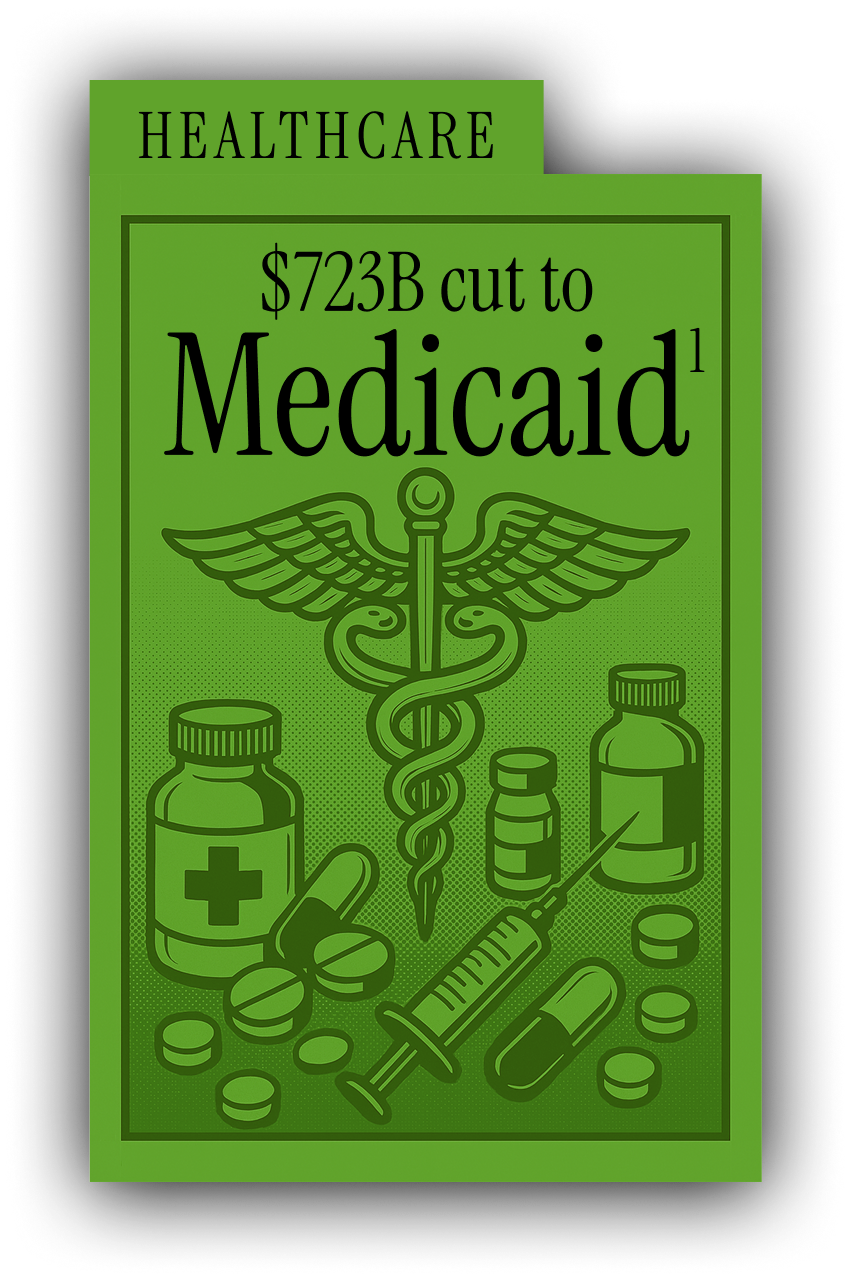


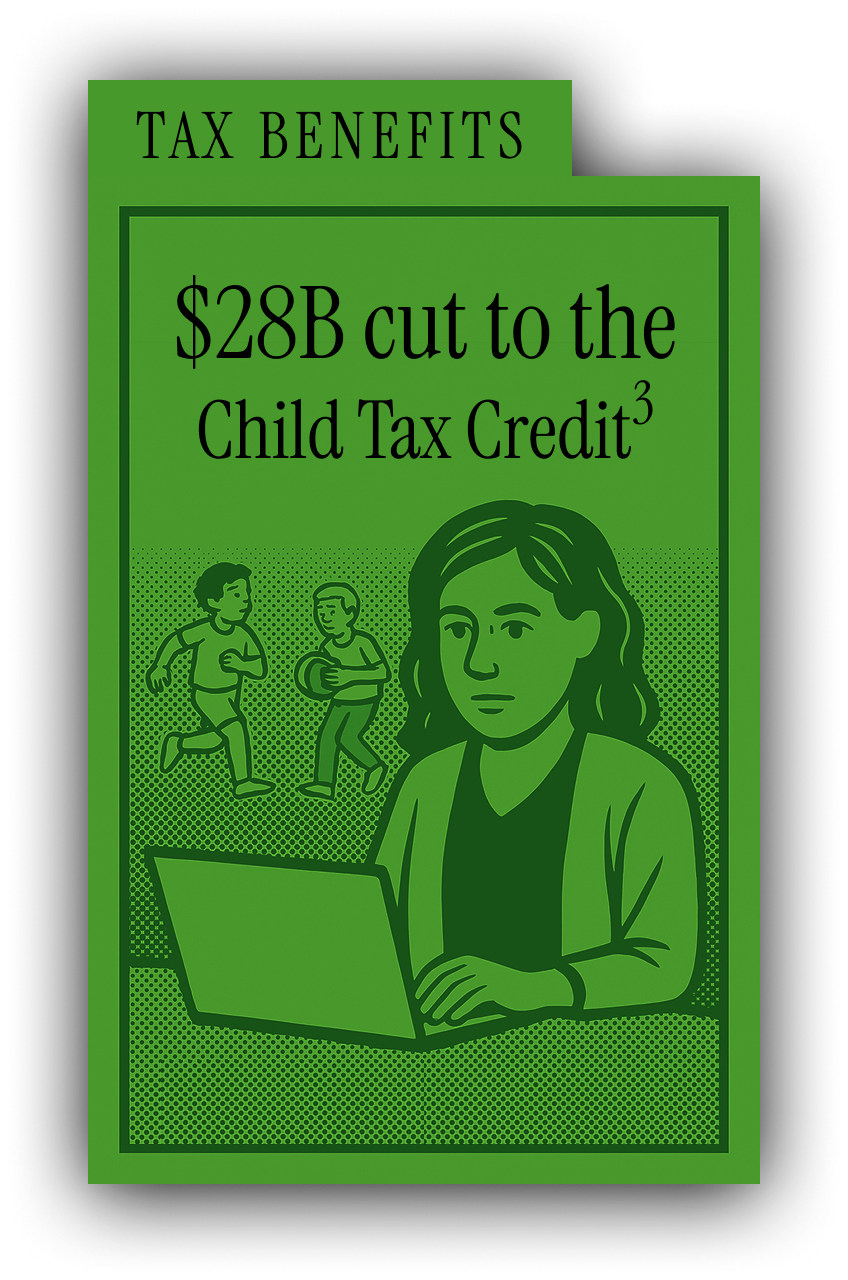

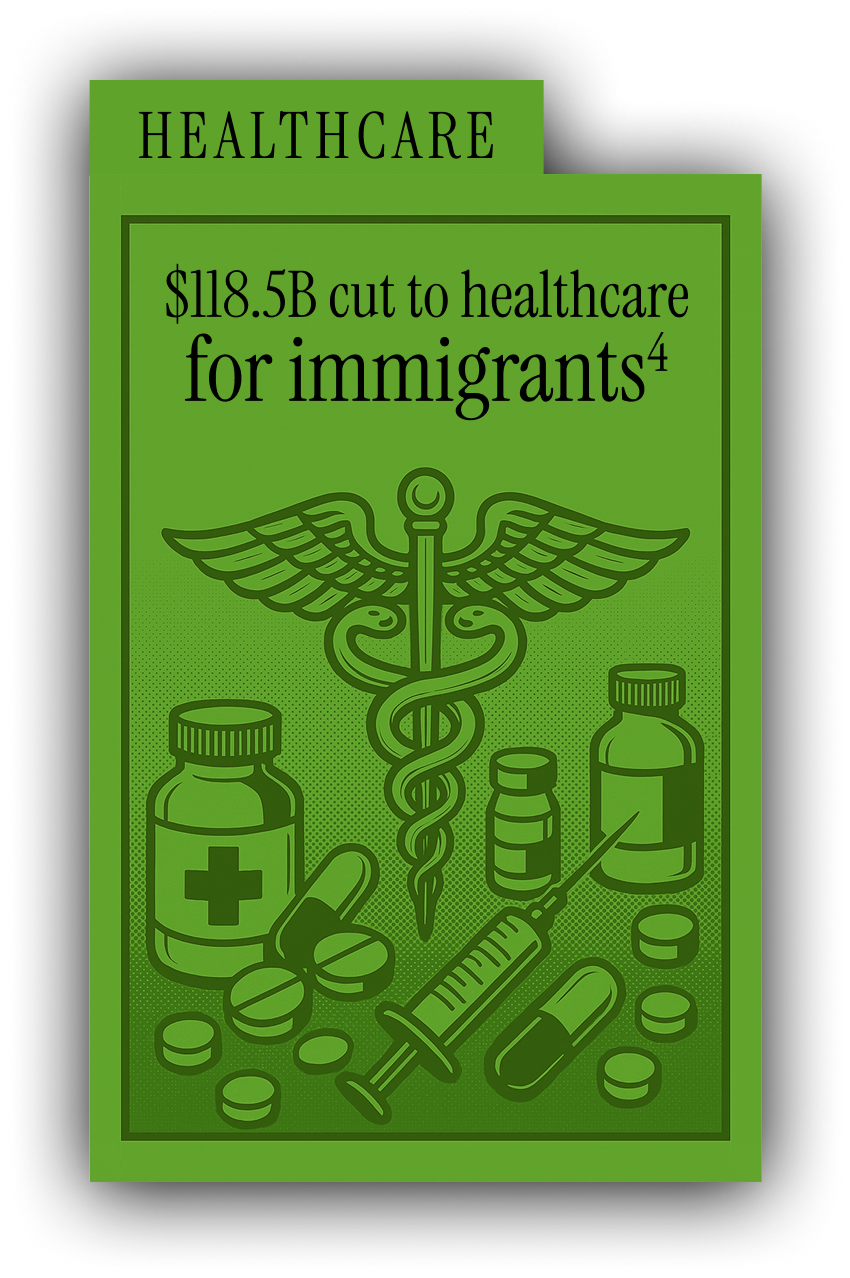
















 TAKE ACTION
TAKE ACTION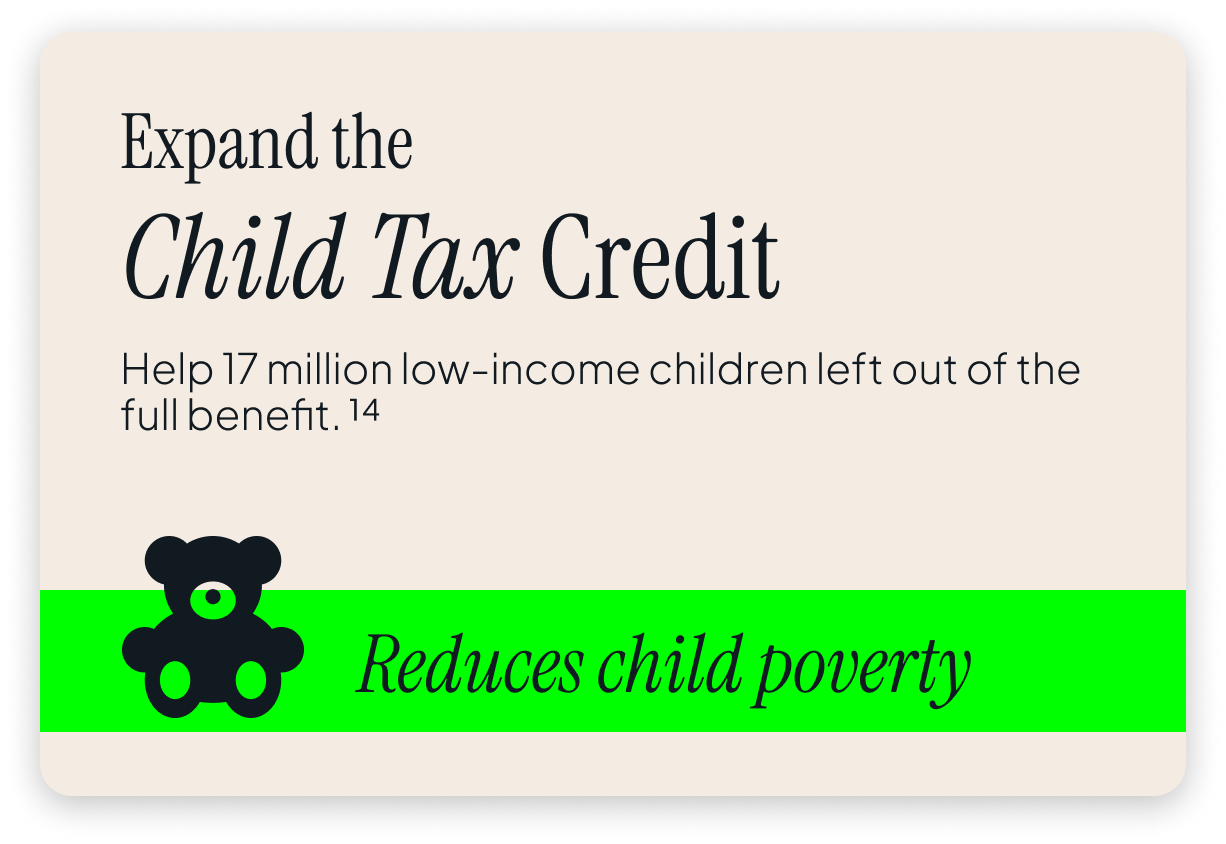
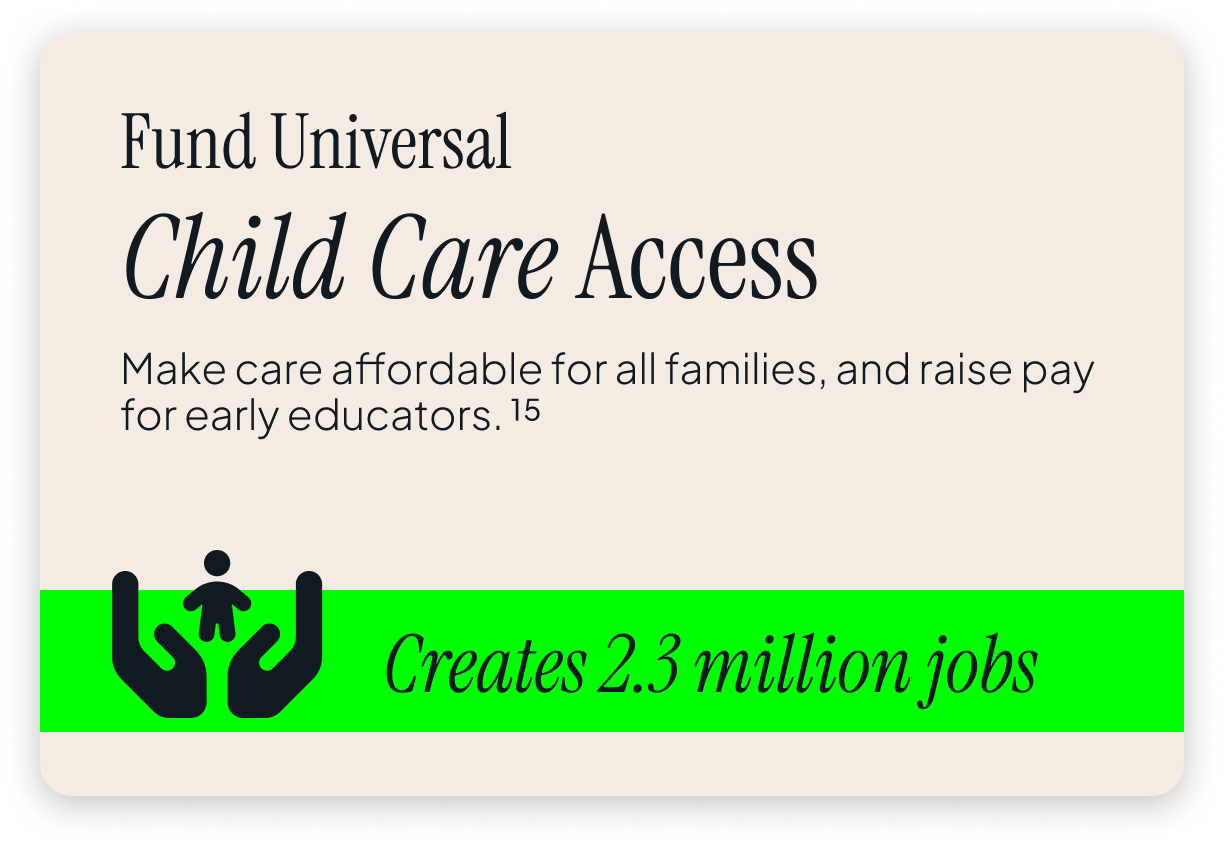
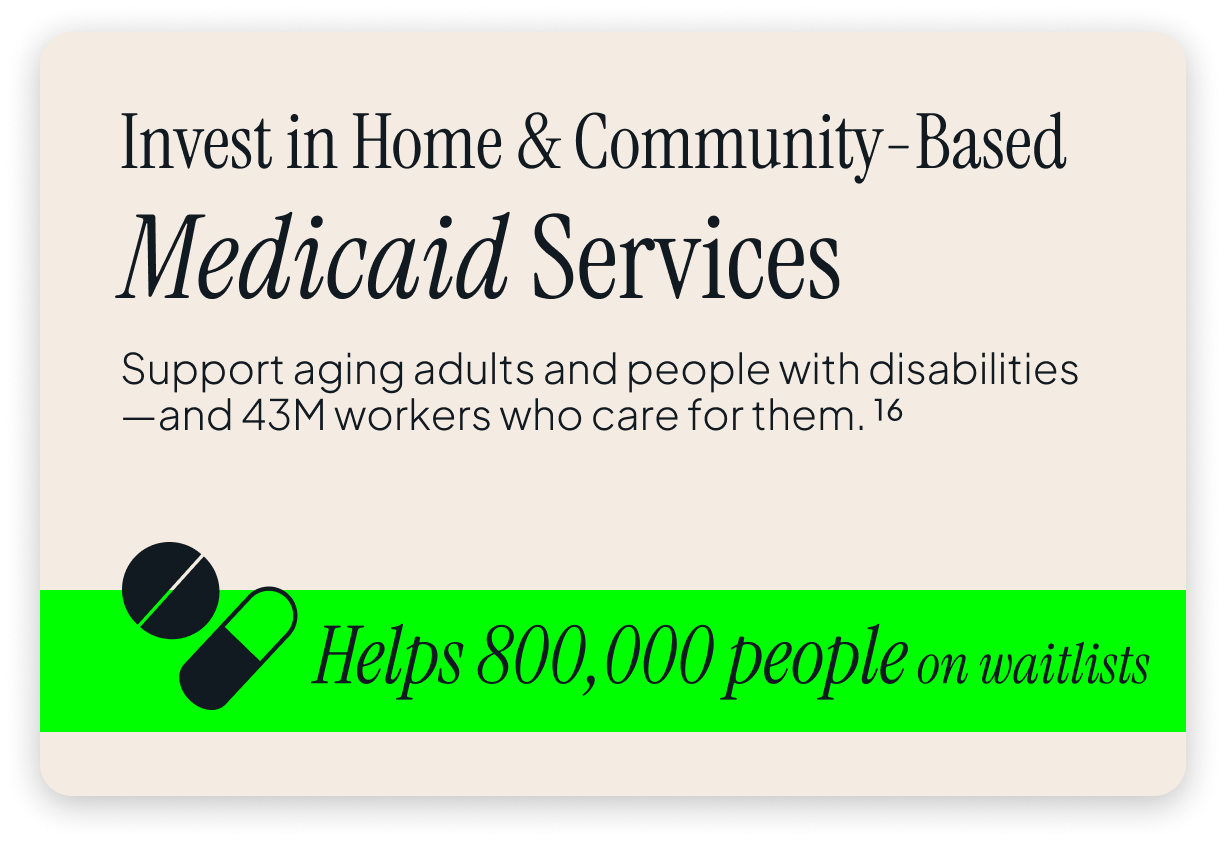
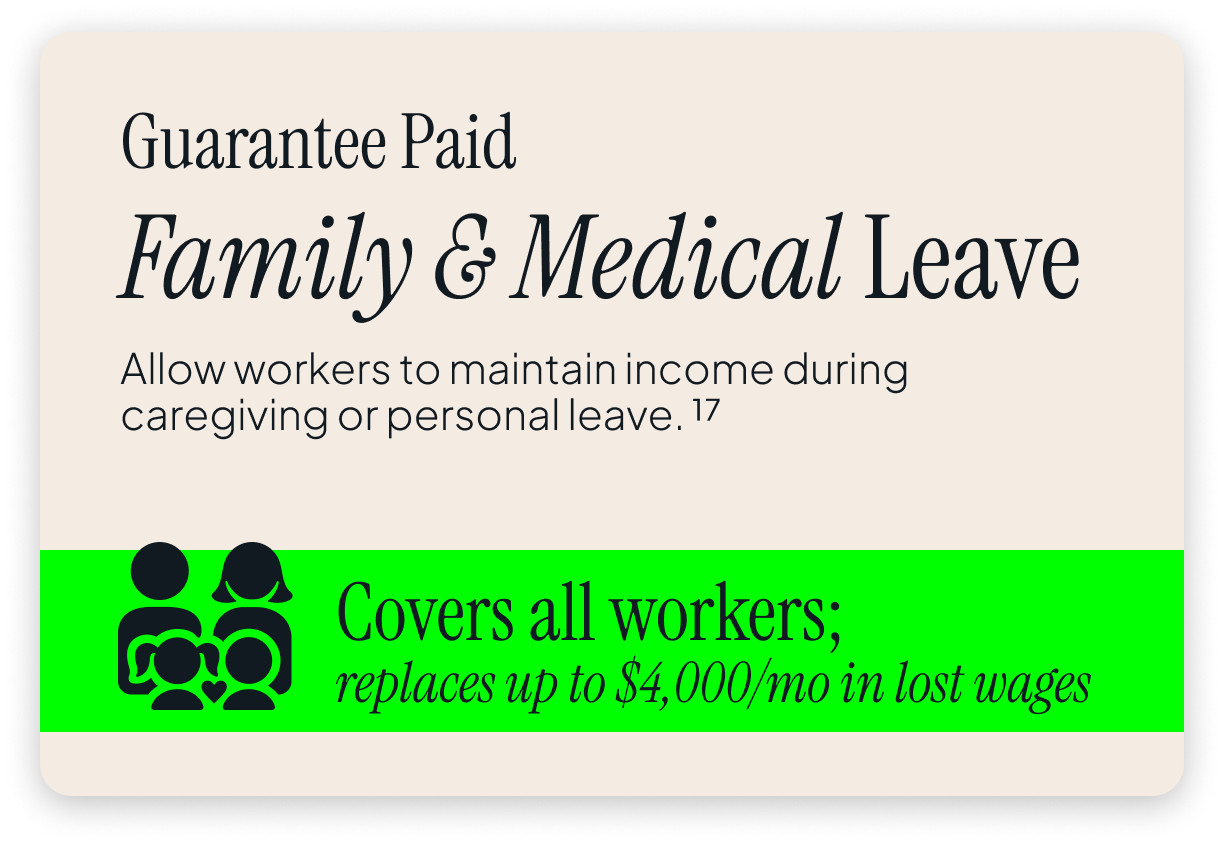
Share this page: